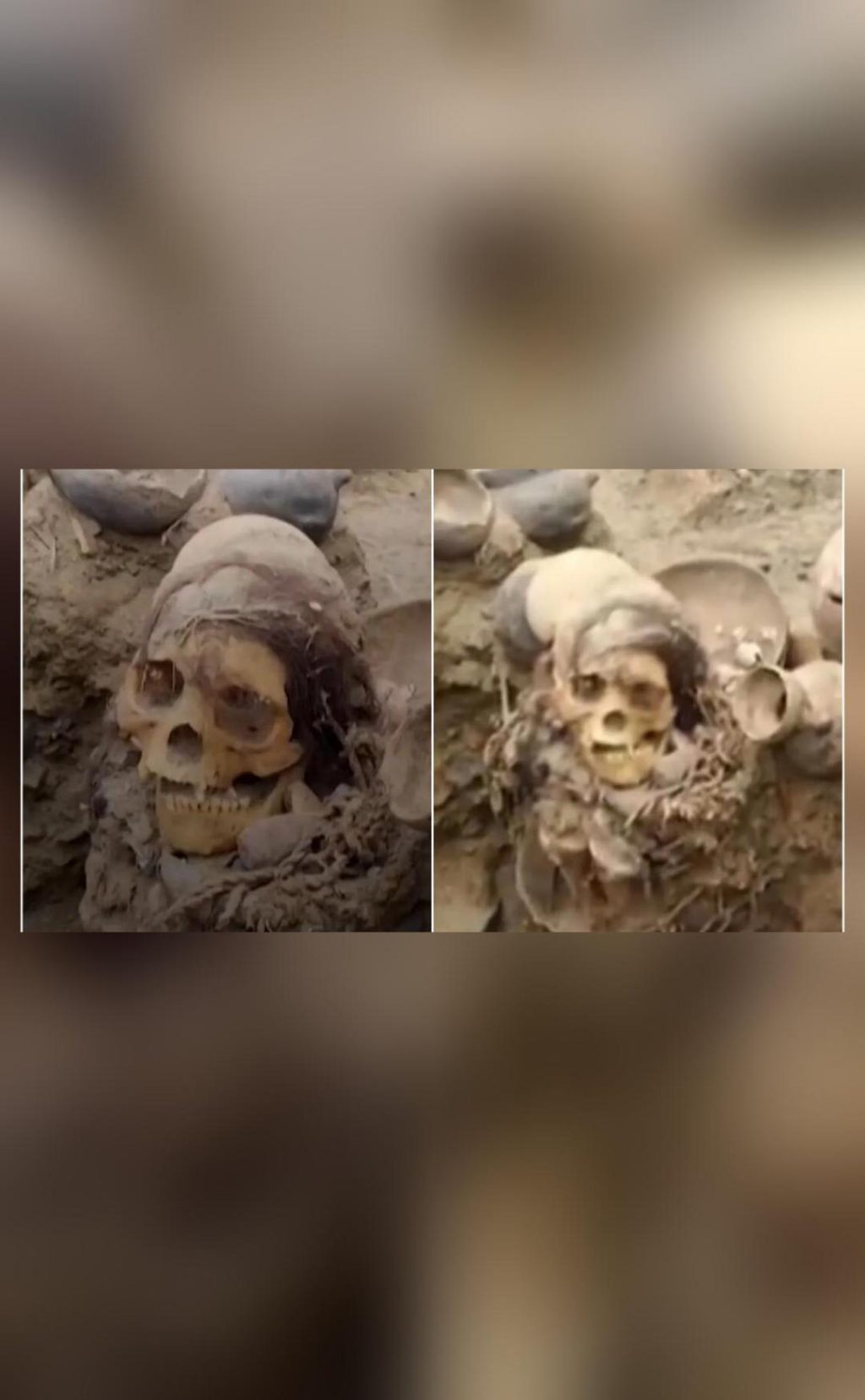
1000-year-old Mummy with Intact Dark Hair Unearthed in Peru
In a remarkable archaeological discovery, utility workers in Peru’s capital Lima have unearthed a 1,000-year-old mummy with intact dark hair. The mummy was found in a seated position, with remains and evidence suggesting that it may be a pre-Hispanic burial site.
The discovery was made while workers were excavating trenches to expand the network of natural gas pipelines in Lima. According to reports, the workers stumbled upon the mummy while digging through the soil, which led to an immediate halt in the excavation work. The archaeologists were quickly called to the scene to investigate and document the find.
“This is a significant discovery for Peru’s cultural heritage, and it’s a testament to the country’s rich history,” said Dr. Maria Rodriguez, a leading archaeologist in the country. “We were amazed to find the mummy in such excellent condition, with its dark brown hair still intact. It’s a rare find, and we’re eager to learn more about this individual and their cultural significance.”
The mummy is believed to date back to the pre-Hispanic era, a time when Peru was inhabited by various indigenous cultures, including the Chimú, Nazca, and Wari civilizations. The discovery has sparked excitement among archaeologists and historians, who are eager to learn more about the mummy and its context.
“We found remains and evidence that there could be a pre-Hispanic burial (near the site),” Dr. Rodriguez added. “This is a significant find, and we’re working closely with the local authorities and archaeologists to ensure that the site is preserved and protected for future generations.”
The discovery of the mummy has also raised questions about the history of Lima and the surrounding region. While the city has a rich colonial history, dating back to the 16th century, the discovery of the mummy suggests that there may be a deeper, pre-Hispanic history to the area.
“This find highlights the importance of preserving our cultural heritage and the need for further research into Peru’s pre-Hispanic past,” said Dr. Pablo Sanchez, a historian at the National University of Peru. “The discovery of the mummy is a reminder that there is still much to be learned about our country’s history, and we should continue to support archaeological research and preservation efforts.”
The mummy is currently being transported to a specialized laboratory for further analysis and conservation. Archaeologists will conduct a series of tests, including radiocarbon dating and DNA analysis, to learn more about the mummy and its significance.
As the news of the discovery spreads, archaeologists and historians are eagerly awaiting the results of the analysis. The find is not only significant for Peru’s cultural heritage but also for our understanding of the region’s pre-Hispanic history.






